Patch 3.23 — Adventure Beckons — dropped last Friday as is CIG’s unfortunate habit but thanks to patch 3.18 there’s been very little turmoil included in this groundbreaking update. There’s too much included in this update to cover in one post, and I certainly haven’t experienced even a fraction of it myself, so let’s take a brief, partial, and damned biased look at what this milestone hath wrought, assuming I can find a decent place to start.
A Map
Titles such as Skyrim didn’t include a mini-map, and the map it did have was kind of a pain in the ass to use, and I think a lot of players felt it hard. I know I did. Star Citizen has only ever had one map, the star map, which left players to navigate the confusing streets and alleyways of major cities. The original star map was a POS which had a tendency to jump around, fade out thanks to weird clipping planes, and sometimes didn’t respond to input. Getting a new star map was high on virtually everyone’s wish list, and now we have it, and with some other maps as well. The star map is the crown jewel as we can now search for destinations and plot routes immediately, see what services a station or LZ offers, and get estimated fuel consumption all in one fell swoop.

Many areas now have local maps as well. In some cases this is too little, too late as we’ve had to learn how to navigate our way around cities and stations, but .23 brought other content such as distribution centers which will make these local maps more useful.
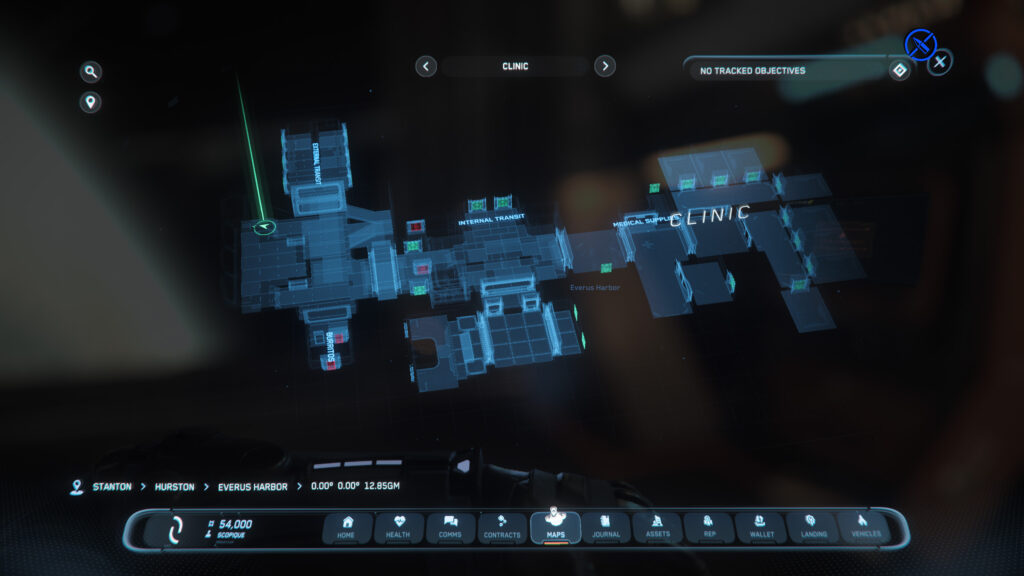
The coolest part about the new map system is that it’s all one system. No matter where we are, we can zoom out to get a full view of the Stanton System (still the only system in the game).
A New MOBIGlass

The MOBIGlass is the character’s wrist-mounted computer which serves as the character management interface very much like how other games serve up inventory, quest journals and more in a separate and disconnected UI. The original MOBI interface was serviceable, but hadn’t changed much over the years; the last thing that was added to the original UI was, I think, the screen to allow us to send money to other players.

While the new MOBI hasn’t added any new functionality, it has updated the visuals significantly for most of the panels. Some screens provide more information, like the self-status screen above which will tell us about injuries and treatments we’re undergoing in the field…
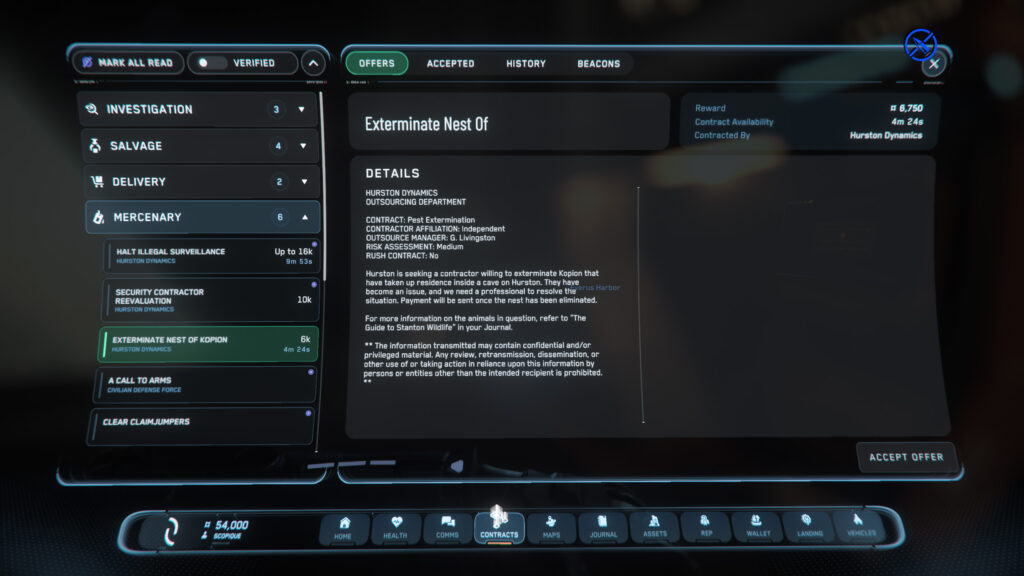
…and the mission journal now streamlines the way we can select and access jobs in the game.
Character Creation
I have said in the past that the new character creator is one feature that could possibly get more people in the door. Personally, I never spend a massive amount of time in the character creator because I’m either first person viewing or only see the backside of my character’s head, but for those who want options, Star Citizen now has Options(tm).
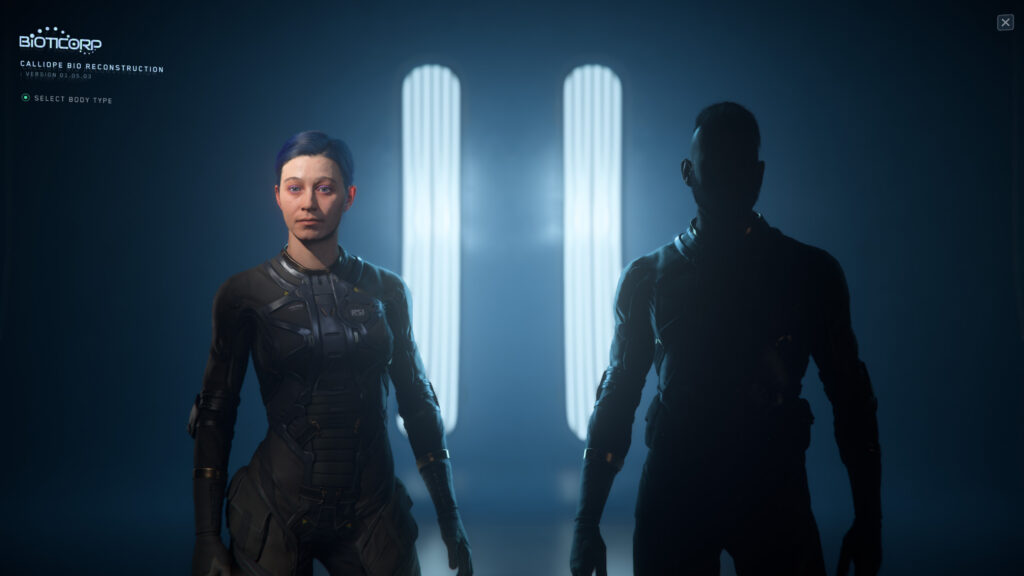

As always, there’s a lore-backed method to this madness, compliments of BiotiCorp. Since “Death of a Spaceman” leans heavily into how characters grow, survive, and persist beyond death, I would expect that the first time a player enters the ‘Verse won’t be the last time the character designer is encountered.
Previous iterations of this interface allowed for some features to be tweaked, and character faces could be blended in a kind of weak “DNA”-branded method which allowed for the morphing of features between two models. The new system builds on this, but also allows us to push and pull various aspects of our character’s faces; unfortunately, doing so is kind of fiddly and I had a hard time getting a look I was 100% pleased with. The new systems also adds more options in terms of faces, hair, and coloration, and as a bonus, we can now save a look to a local library, meaning we can play with as many faces as we like and pick one from our own custom collection.
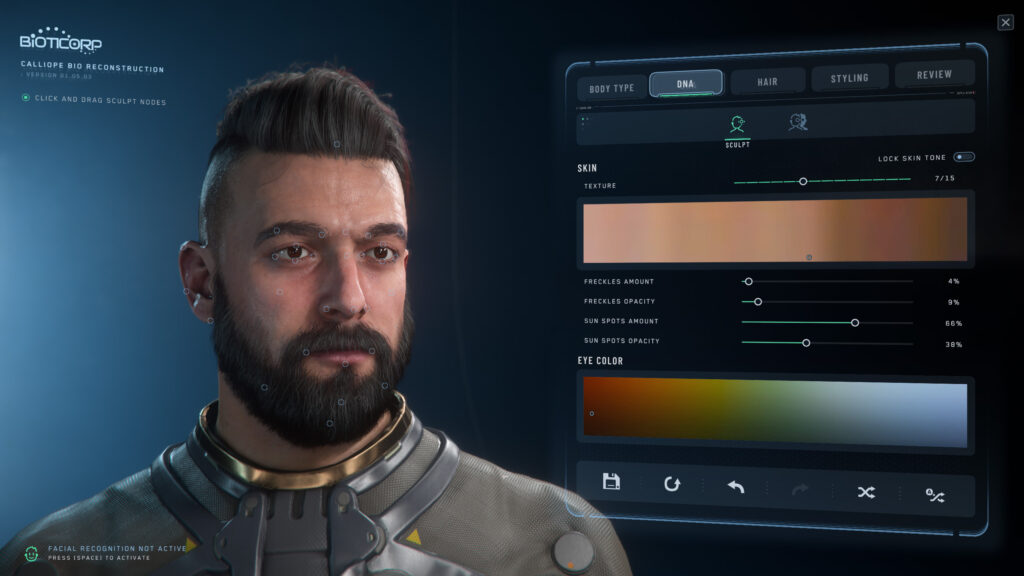



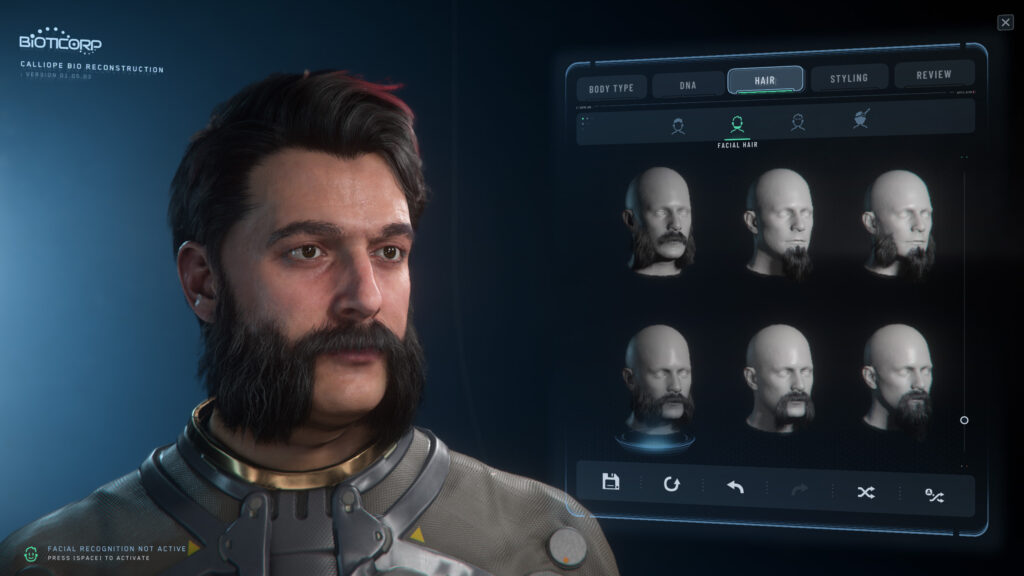
I spent a bit of time with the system yesterday morning because I had forgotten to take screenshots when I was setting up my main account character, so I didn’t nail down the full breadth of options and combos available (and I wouldn’t be surprised if some aspects will need shoring up from the CIG side). Styles ranged from Ghost Recon Guy, Middle Aged Space Dad, Ted Lasso, Young Santa, and Master & Commander.
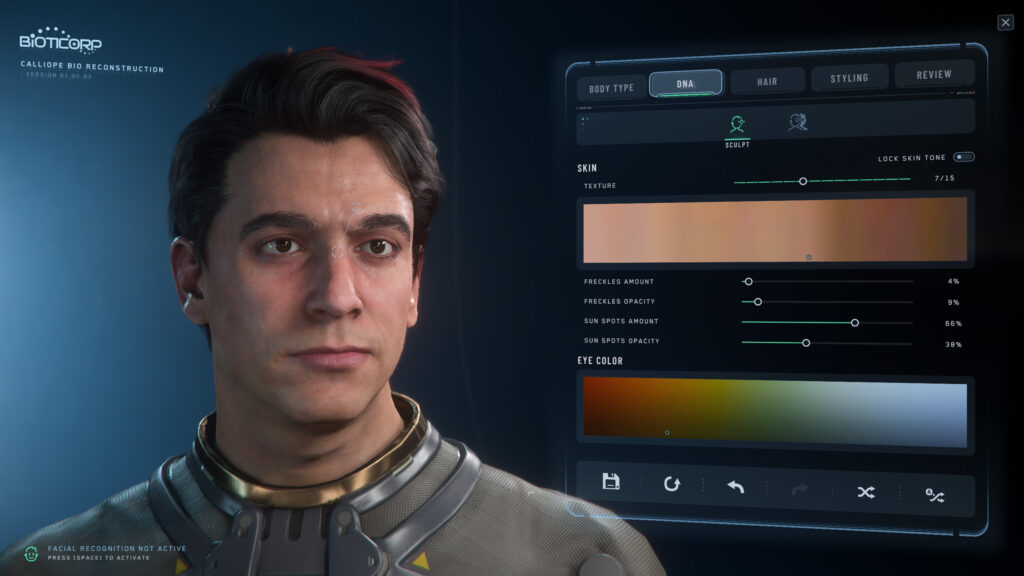


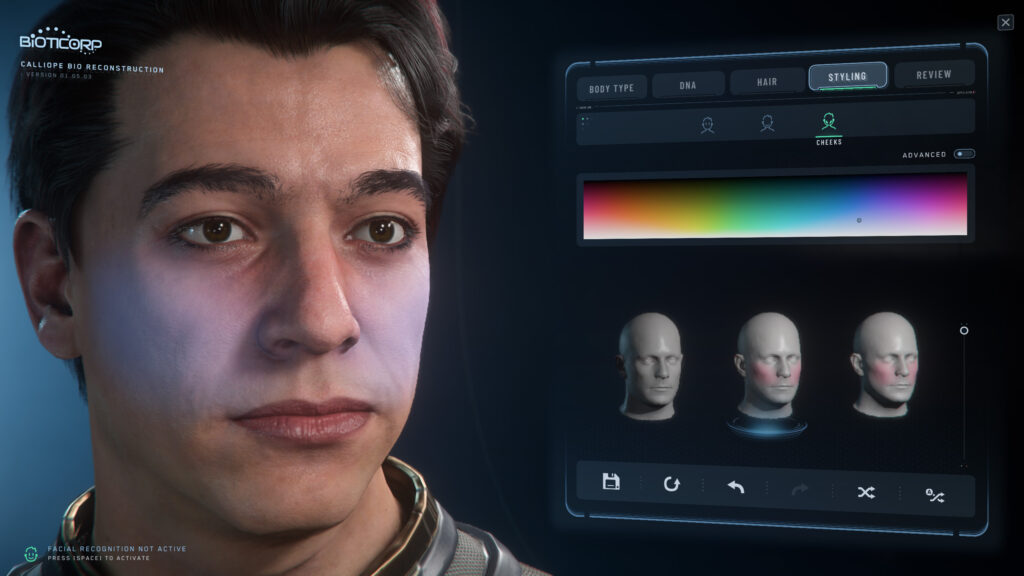
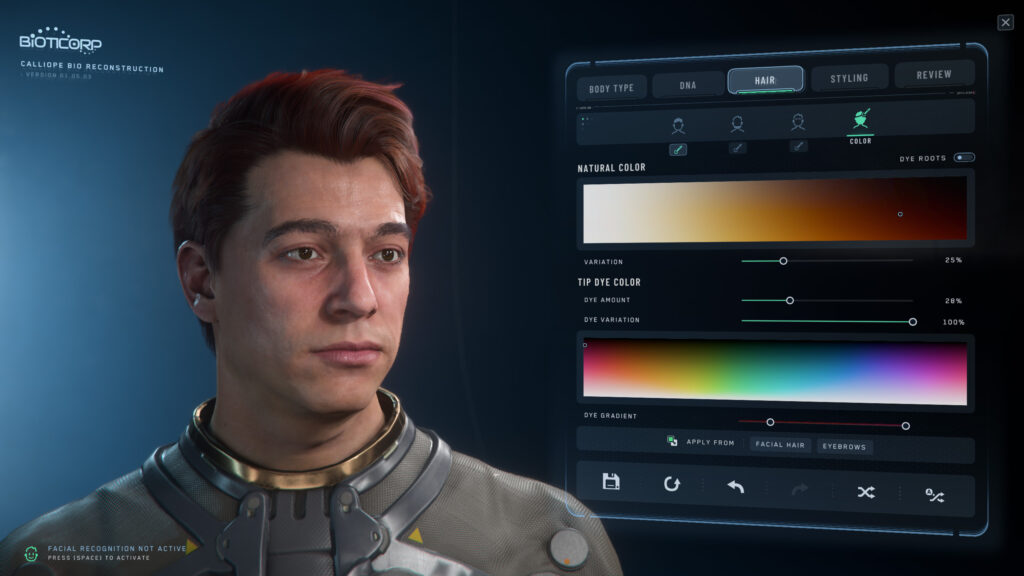
Everything available to customize your character is unisex, which includes hair both top ‘o the head and facial, and makeup. The hair gets a particular shout-out because CIG has done a hell of a lot of work on it to make it behave somewhat realistically, and because players will have a whole lot of control over how we can color it (hair, beards, and eyebrows).
Master Modes
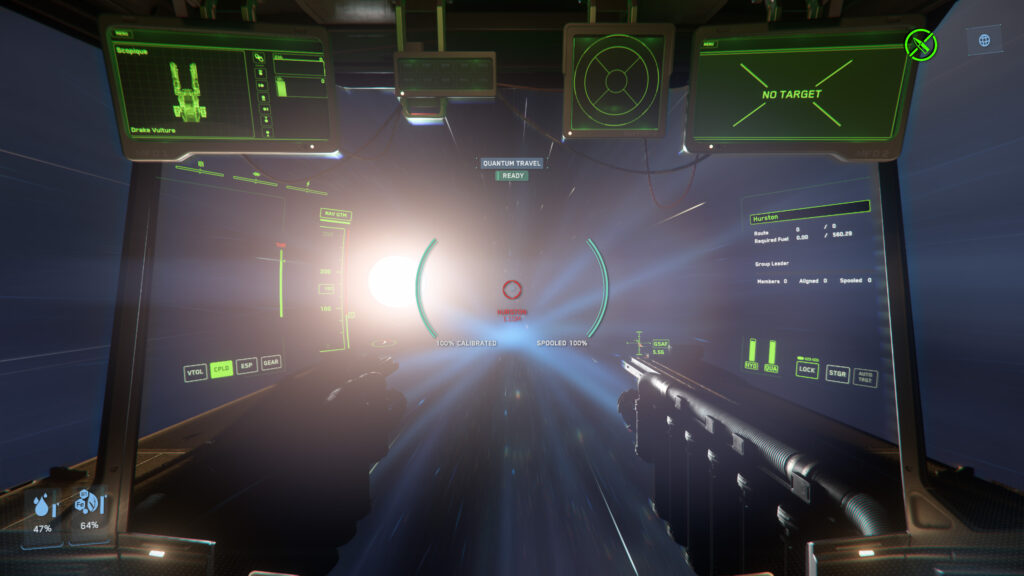
Master Modes was probably the one feature that I and many other people were on the fence about, and the one that many other people were already for or against. I didn’t try it in Arena Commander, nor did I give it a shot on the test servers, so the live release was my first experience with this controversial new feature.
The stated goal of master modes is to make dog-fighting more interesting and visceral. In the previous model, ships would probably end up “jousting”, flying towards one another, weapons blazing, until combatants passed one another. Each pilot then had to come around for another similar pass over and over until one ship exploded. This is the way 90% of every other flight sim combat scenario plays out, and it’s been OK for decades but it’s never been ideal nor exciting as jousting is kind of the “default” method for those who don’t know how to fly differently.
Master modes splits ship operation into two different, well, modes. The first is SCM, and in this mode, the ship behaves more or less like how it did in the previous model with a few exceptions: the ship cannot quantum jump (long distance travel), and the maximum speed is somewhere around 200 m/s. CIG believes that when speeds are reduced, combatants are forced to stick close to one another thereby reducing the “fly out, turn, return” style that gave rise to jousting. It also changes the dynamics of how long-range weapons like missiles and torpedoes work, as slower speeds means that long range weapons are only usable during the opening of an engagement or by ships who purposefully remain on the periphery of an engagement. While CIG believes that this mode will be a boon for combat engagements, long-time PvP “pros” who have spent hours learning to fly within the confines of the original system were pissed (maybe not universally, but a lot of high-profile players certainly were). SCM mode was touted as an “equalizer”, making it so less-skilled and new players could perform better right out of the box, but the seasoned pilots felt that they were being hamstrung to make game-play easier for those who weren’t spending the time improving their flight skills.
The second mode is nav mode. Ships in this mode can travel at maximum speed — up to and sometimes over 1000 m/s depending on the ship — and can quantum jump, but these benefits come at a price: no weapons, no countermeasures, and no shields. The goal of nav mode is to allow players to get around faster, but I’m sure you can see for yourself how this aspect went over with the PvE crowd. Almost immediately people complained that this was literally handing asses to pirates and griefers who could pull quantum travelers out of warp along major travel routes and pin them there without weapons or, more importantly, defenses. Although players can switch between nav and SCM at the push of a button, there is a variable lag-time between when the switch to SCM was initiated and when shields started to refill (capacitors were used to explain how a ship can “store” SCM shield energy for a switch out of nav mode). Of course, once a pilot switches out of nav mode, they are committed to combat as their one asset — speed — is no longer available to them.
I will admit that I was in the former camp and although I no longer have the post here on the site, I complained about master modes and how CIG was continuing to give PvP players a mile for every inch they gave PvE players. Having tried it out, though, and having watched a few videos from a range of players who have actually tested the viability of escaping from SCM encounters while in nav mode, I am no longer convinced that master modes are the boogeyman that non-PvP players believed them to be. I will say that I have yet to “do combat” in .23 with master modes, but the other night I was interdicted while quantum traveling, probably by an NPC, and managed to gun the throttle, realign with my quantum destination, and fly away without any harm.
Of course, this is not a promise, nor is it a one-situation-fits-all declaration that the complaints against master modes from the PvE side are all smoke and no fire. A well organized, skilled group of players will certainly be able to come up with a plan to interdict and harry players who might otherwise just want to Get Stuff Done with their play time; master modes will be unequivocally be to blame for many player deaths. Usually in PvP focused games the mantra (from the PvP crowd) is to “bring friends” but as most of us know, while this is sound advice it’s not always possible nor practical, and that’s just a fact that should never prevent people from playing a game they want to play. Nav mode can be dangerous, absolutely, and it would have been nice if CIG didn’t seem to go so hard by removing all defenses from nav mode pilots, but since the ultimate goal of a nav mode pilot in an unwanted situation is literally to escape the situation, the best way to do that is to give them the ability to simply outrun their attackers ships and, in many cases, their weapons.
I suppose it’ll remain to be seen how master modes performs with more data points as more players get hands-on with .23, and like any other feature at this point, CIG will certainly not be able or willing to keep their hands off the knobs and levers that tweak the way this and other systems operate.




